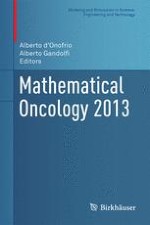2014 | OriginalPaper | Buchkapitel
Tumor Microenvironment and Anticancer Therapies: An Optimal Control Approach
verfasst von : Urszula Ledzewicz, Heinz Schättler
Erschienen in: Mathematical Oncology 2013
Verlag: Springer New York
Aktivieren Sie unsere intelligente Suche, um passende Fachinhalte oder Patente zu finden.
Wählen Sie Textabschnitte aus um mit Künstlicher Intelligenz passenden Patente zu finden. powered by
Markieren Sie Textabschnitte, um KI-gestützt weitere passende Inhalte zu finden. powered by
